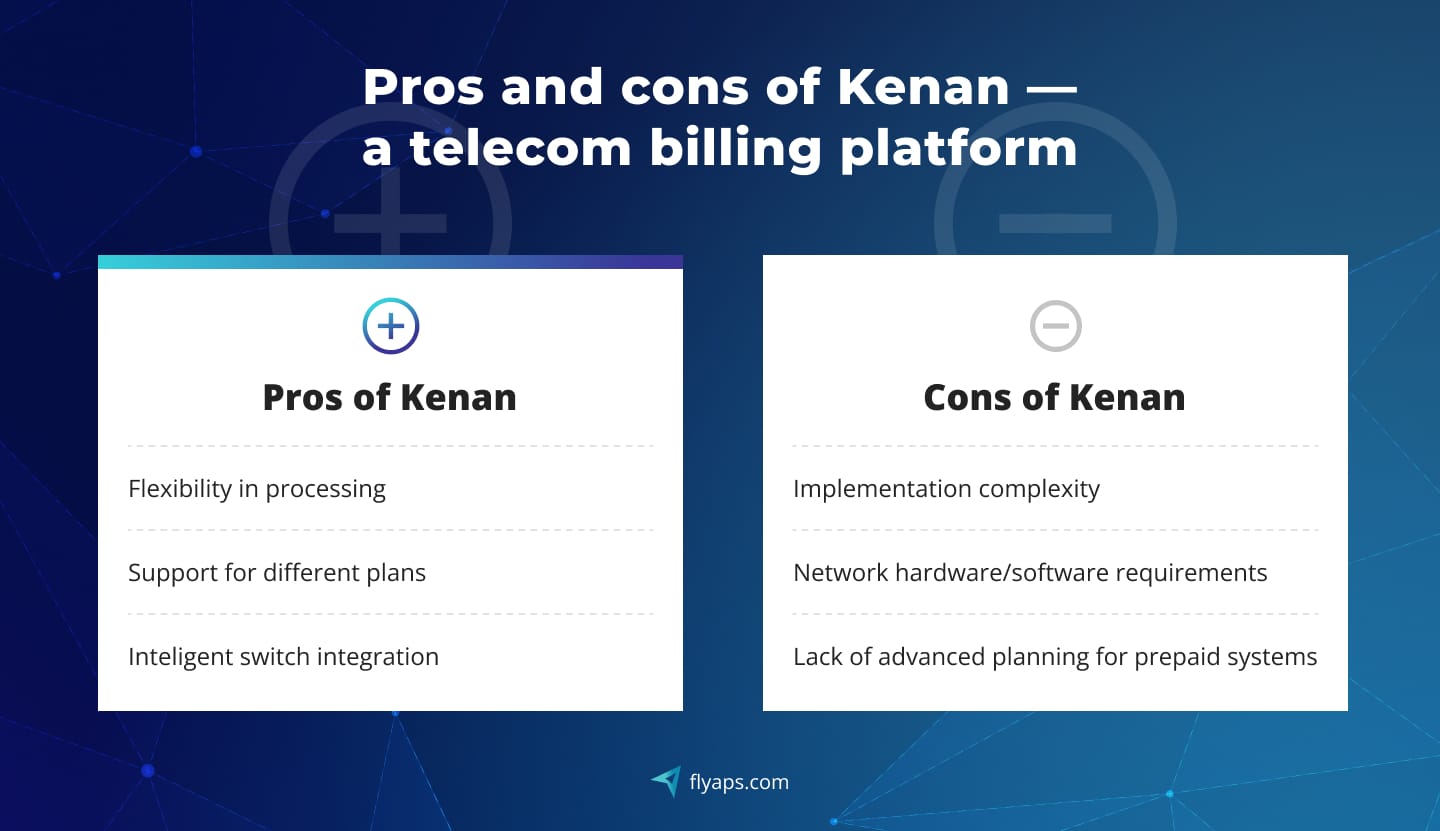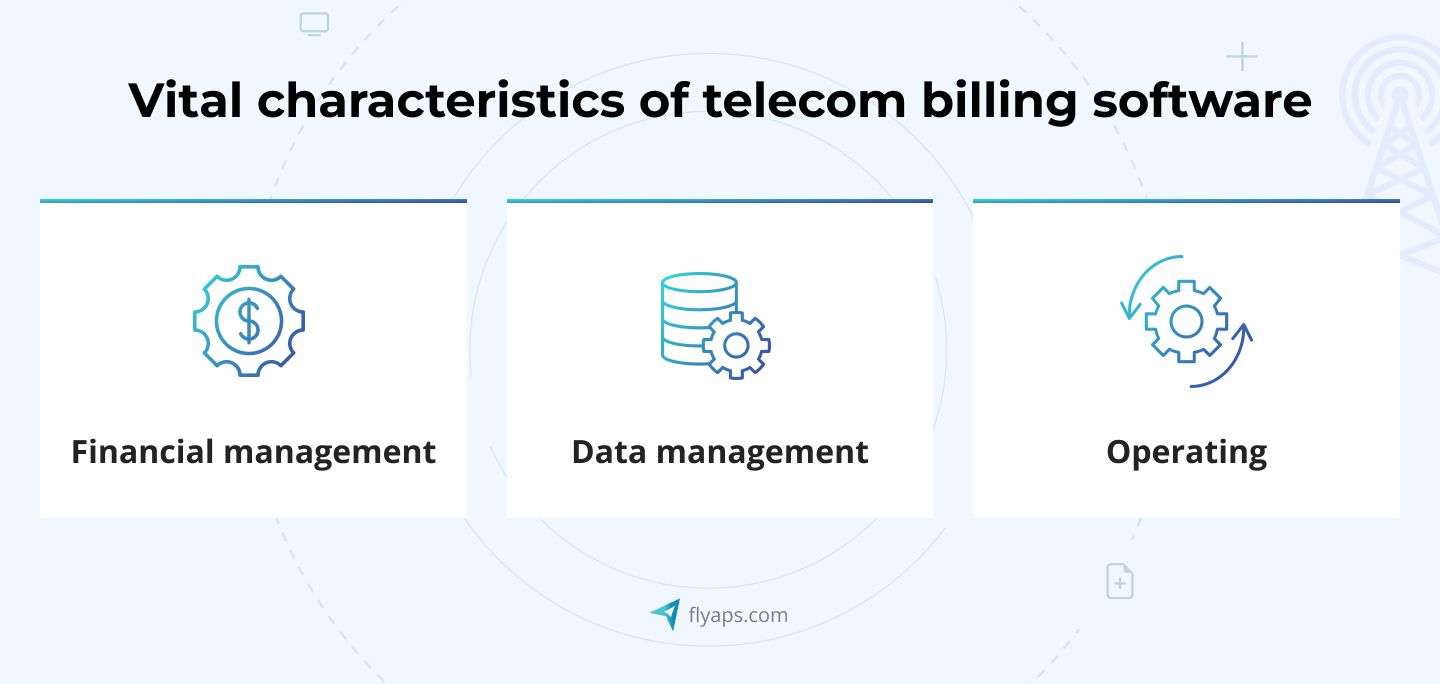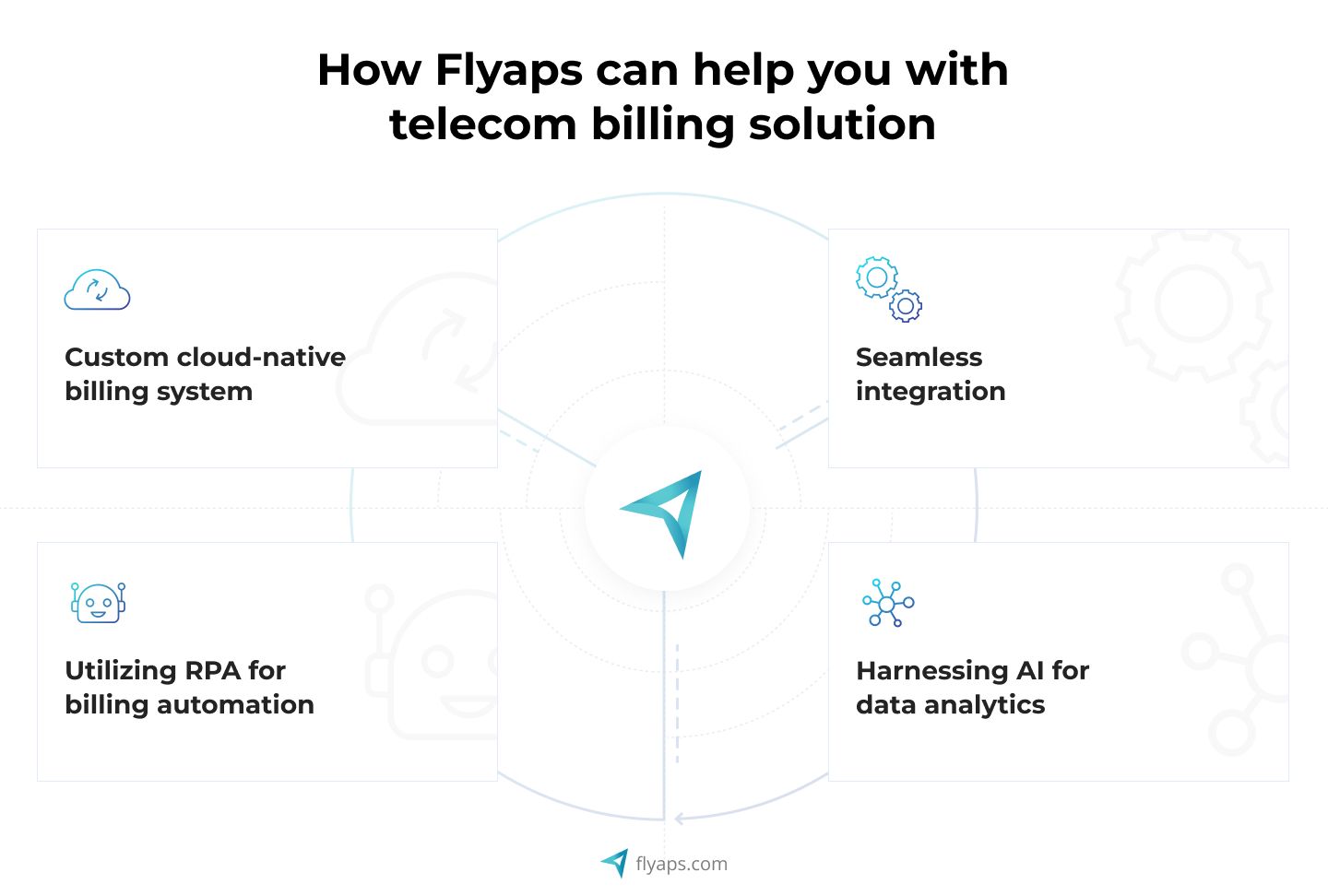How to Find the Best Telecom Billing Solutions for Your Company: A Guide to Choosing the Right Fit

The global telecom billing market grew to a massive $13.90 billion in 2021 with experts predicting it to expand at a remarkable rate of 9.9% annually until 2030. This growth is fueled by the increasing number of customers using smartphones and the internet. With this billing surge many telcos face a common challenge of finding the perfect solution that fits their complex needs. They have to deal with various pricing models, service levels, and customer types, creating a real puzzle that ordinary off-the-shelf billing solutions struggle to solve.
Each customer has different preferences, from data-hungry users to globetrotting digital nomads and people looking for simple communication. Telcos understand that delivering a personalized and dynamic billing experience is vital for success. But the truth is, there aren't many telecom billing solutions that can seamlessly combine versatility and precision. And things get even more complicated due to changing regulations that require real-time data processing.
At Flyaps, we have over a decade of experience in the telecom field. We've witnessed the struggles our clients had to overcome again and again. From our experience, for some cases it's better to create a billing tool within a custom CRM/ERP system. For others, a separately tailored telecom billing application that smoothly integrates into the existing infrastructure can help better.
In this article, we've decided to share our experience on telecom billing solutions. We'll explore why creating a flawless solution is such a big deal and what "flawless" means when it comes to billing software. Additionally, we'll showcase the challenges our telco clients faced with billing solutions and how we've successfully solved them. Keep reading!
The most popular telecom billing systems: pros and cons of each solution
Let's kick things off by taking a closer look at what's currently available in the market. Some companies offer business intelligence solutions that are customized only for a handful of sectors that share similar needs. But for now, let’s focus on those who have positioned themselves as providers of billing systems crafted with a focus on the telecom industry, although not necessarily exclusively.
Amdocs' Kenan

Kenan is a tool by Amdocs that helps simplify the management of customer care, ordering, and billing in the telecom sector. It reduces deployment time and risk by closely integrating these functions.
To better display its benefits and flaws, try to imagine a telecom company embarked on improving their billing management. Like others in the industry, they sought a solution to handle diverse B2B and B2C customers, alongside complex revenue sources like voice, video, messaging, content, and internet services.
After research, they chose Amdocs Kenan to simplify operations. Kenan promised to manage interactions, orders, and billing seamlessly, possibly reducing deployment risks and time. The telco saw potential in Kenan for managing B2B offerings and B2C plans.
Kenan's adaptability stood out, allowing customization for various plans, from unlimited usage to unique options. This flexibility ensured accurate billing experiences.
However, there are some implementation challenges to be aware of. Real-time processing and policy control might require additional resources and expertise. Kenan might not be ideal for prepaid systems, risking revenue loss due to a lack of predictive capabilities for prepaid credits.
From cloud migration to telecom-specific AI solutions, we have delivered over 20 projects that are used by hundreds of MNOs and telecom companies worldwide. Check our capabilities and let’s discuss your next solution.
See our servicesPros of Kenan
- Flexibility in processing
The system is adaptable to different business goals and setups. It can handle both real-time and batch processing for usage data. This flexibility is valuable as it aligns with different business strategies.
- Support for different plans
Whether telecom companies offer unlimited usage-based plans or other types of plans, Amdocs Kenan can be tailored to match those offerings. This adaptability supports diverse service offerings.
- Intelligent switch integration
For real-time usage processing, Amdocs Kenan can integrate with intelligent switches. This ensures that policy controls are implemented effectively, enhancing the accuracy of billing and ensuring proper revenue capture.
Cons of Kenan
- Implementation complexity
Implementing real-time usage processing and integration with intelligent switches requires additional hardware and software components. This complexity might increase the overall implementation effort and costs.
- Network hardware/software requirements
To enable real-time usage processing, companies may need to invest in additional network hardware and software for implementing policy controls. This adds to the technological requirements.
- Lack of advanced planning for prepaid systems
In scenarios where prepaid systems are used, advanced planning is crucial to determine how much usage each subscriber can make before they run out of prepaid credits. Lack of this information could lead to revenue loss.

In February 2022, Amdocs introduced a new solution for the 5G services providers – Freestyle Billing. The solution takes a holistic approach to monetization, addressing the diverse capabilities and use cases that 5G enables, such as network slicing, AR/VR services, and precise monitoring. It introduces a single, universal biller that caters to each customer, whether they are individual consumers or enterprises. This biller offers a preferred monetization model based on the specific service, granting the flexibility to choose various billing and business models to align with customer preferences.
The solution is relatively new, but it has the potential to become as popular as Kenan.
Rev.io

Rev.io is a fully-featured billing platform for telecommunications and IoT services offering secure, reliable, and flexible options for managing customer relationships and billing processes. Rev.io is a good choice for both emerging and established businesses, aiming to help clients innovate and scale their operations while utilizing the top billing solution available. The platform is built on a next-generation hybrid cloud infrastructure to ensure clients can seamlessly scale their resources up or down as needed
Pros of Rev.io
- Efficient subscription billing
Rev.io comes with monthly subscription billing, a feature that most software lacks. The platform's capability to manage changing CDRs for each customer aids in recouping potentially lost billings, eliminating the need for extra accounting hours.
- User-friendly export capabilities
The ability to export the product catalog simplifies tasks like creating quote tools, using tools like Excel, resulting in a better efficiency in various processes.
- Customizable reporting
While Rev.io's canned reports might not be comprehensive, their responsive and enthusiastic reports team is open to help create tailored reports for various needs.
Cons of Rev.io
- “Awkwardly structured and inflexible reports”
Some users find the reports in Rev.io to be poorly structured and challenging to modify. This lack of flexibility might impede efficient data analysis.
- Steep learning curve for VoIP newcomers
The initial interface is not very intuitive for beginners, necessitating substantial time investment to understand features like minutes, toll-free numbers, and number packages. Having an expert's guidance is recommended for a smoother learning process.
- Task and ticket visibility challenges
Some users express frustration over the visibility of their tasks and tickets as these features are spread across different pages. This arrangement makes it challenging to gain a clear overview of pending tasks and ongoing tickets, requiring extensive sorting.

Oracle BRM

Oracle BRM, or Oracle Communications Billing and Revenue Management, is a versatile monetization solution used by telecom companies. It offers real-time charging, diverse business models, precise revenue collection, and scalability. Key features include handling various services, supporting complex business structures, enabling real-time billing, and offering cloud-native deployment options.
Pros of Oracle BRM
- Scalability for 5G and IoT
The introduction of Oracle ECE (Elastic Charging Engine) in Oracle BRM architecture addresses the scalability demands posed by the growing number of requests from IoT devices and the emergence of 5G technology. ECE provides a fast, reliable, and low-latency rating engine capable of scaling to accommodate the increasing workload.
- Comprehensive revenue management
The system offers a complete solution for capturing, generating, collecting, and analyzing revenue. It provides a versatile platform that can be customized to suit the specific needs of various industries, including telecom.
- Efficient pricing catalog management
The Pricing Design Center (PDC) is a web-based application that allows telecom companies to seamlessly manage their pricing catalog. PDC facilitates the setup of pricing for different services and products offered by the organization. It synchronizes with ECE and Oracle BRM to ensure consistency in pricing data.
Cons of Oracle BRM
- Integration challenges
Integrating Oracle BRM with other existing systems, such as CRM or ERP platforms, can pose integration challenges. Ensuring seamless data flow and consistency across systems may require additional effort and technical expertise.
- Customization maintenance
While customization allows telecoms to tailor Oracle BRM to their needs, maintaining these customizations over time can be complex and resource-intensive. As the telecom's business evolves, these customizations may need to be updated, tested, and integrated with new features, leading to ongoing costs and potential disruptions.
- Vendor lock-in
Once a telecom adopts Oracle BRM, it becomes heavily dependent on the Oracle ecosystem. This can create a level of vendor lock-in, where transitioning to a different billing system becomes more challenging due to data migration and integration complexities.

As you can see, there is no universal solution for everyone and even the best players in the game have their flaws. Your goal is to evaluate those flaws as they can be minor for other telcos, but major for your company. Now, we’re going to talk about the most common challenges to watch out for while implementing off-the-shelf billing software.
The key challenges for choosing a telecom billing solution
The world of telecommunications comes with some difficulties that shape how the industry works and affect how telcos choose the best ways to handle billing. So, let's review the most common and critical ones.

Integration issues
In the telecommunications industry, a multitude of software applications is in play, tracking customer details, network performance, analytics, billing information, and more. These systems communicate with each other to offer a comprehensive overview. When introducing new tools into this complex network, seamless integration with other solutions, including CRM and BSS, is essential. All systems must work together cohesively since billing is an especially complicated component.
Yet, integrating off-the-shelf telecom billing systems can be a double-edged sword. While they may smoothly blend with your modern solutions, compatibility issues might arise with your legacy systems. But what if those legacy tools are still working well for you? Investing in modernizing them solely for the purpose of incorporating another vital tool doesn’t make much sense.
To address this problem, telecom businesses have an avenue: crafting bespoke automated billing software designed to fit their existing services and infrastructure. This strategic investment streamlines billing operations and avoids unnecessary overhauls while ensuring harmonious operations.
Customization
Ready-made telecom billing solutions offer a degree of customization. Telecommunications companies can even strike deals with their chosen billing service providers to add specific features for an extra cost, going beyond the standard offerings. But the extent of customization options in these solutions is limited by technical restrictions and the financial hurdles faced by telecom operators.
Off-the-shelf solutions may not fully meet the unique requirements of certain telecom providers. Each company may have its individual approaches to invoicing customers, providing services, and managing invoices. In case the billing software cannot be tailored to meet these specific requirements, telcos may face hurdles in managing their billing procedures easily.
Scalability
When telcos set their sights on grand horizons, expansion becomes an integral part of their strategic playbook. Their billing requirements become more complicated as they offer their services to more customers and expand their reach. Off-the-shelf solutions work well for small businesses, but they are put to the test as these companies scale. The billing solution must handle more data and transactions smoothly when the business grows.
Poor user experience
Bad user experience in billing solutions can cause a lot of drama and revenue loss. Let's explore this further with an illustrative example.
Imagine a telecommunications services provider whose billing system has become a major headache for both their internal staff and their corporate clients. The billing system they use is convoluted and confusing. Staff members, including the billing, accounting, and customer service teams, struggle to navigate it. This results in mistakes, slow processing, and frustration. Staff members find themselves spending more time figuring out how the system works than focusing on their primary responsibilities. As a consequence, the efficiency of the company's operations suffers, and errors become more frequent.
To make matters worse, the complexity of the billing system creates misunderstandings with their clients. One of their major clients finds the billing details unclear and inconsistent. This leads to disagreements and disputes over the charges. As a result, payments from the telco's clients are delayed, affecting the company' cash flow.
Complex pricing models
A telecom company might offer different plans for different usage levels – such as basic, intermediate, and premium packages, each with varying features and allowances. Additionally, they might introduce limited-time offers or discounts to entice new customers or retain existing ones.
The challenge here is to make the billing solution capable of managing this complexity. It needs to accurately calculate charges for each customer, taking into account the specific pricing plan they're subscribed to, any applicable discounts they might be eligible for, and any additional services they've availed.
Imagine a customer who has a basic plan with a certain monthly fee. They've added an extra service like international calling or extra data, each with its own cost. On top of that, they might be eligible for a promotional discount for the first three months. The billing solution must be capable of accurately summing up all these components to produce an invoice that reflects the customer's usage and the associated costs. Furthermore, customers can change plans or add services anytime, adding to the complexity. The billing should smoothly adapt to these changes for accurate charges.
In essence, complex pricing models demand a billing solution that is both flexible and robust. It should be capable of accommodating the numerous permutations and combinations of pricing plans, discounts, and promotions that telecom companies offer while still ensuring that customers are charged correctly according to their usage and the services they've chosen.
Now, you might be wondering: what should businesses search for in a good telecom billing solution? Well, the next paragraph has the answer to that question.
Essential features to look for in telecommunications billing systems

In general, telecommunications billing solutions perform three primary functions: financial management, information management, and operations or service management. When billing and revenue management tasks are combined, other features like fraud management, profitability management, and revenue assurance may also be offered.
- Financial management: It involves payment tracking and processing, aligning payments with service usage, performing tax computation, managing credit allocation, and supervising debt collection.
- Information management: This includes tasks related to customer information, product information, service details, pricing models, billing cycles, triggers, delivery methods, audit settings, and data parameters. Usually, customer data is either integrated with or managed alongside a customer relationship management system (CRM).
- Service management: This involves recording usage data, evaluating usage, setting prices, tariffs, discounts, taxes, and fees on individual customer accounts, generating invoices, distributing invoices, making adjustments, and maintaining customer accounts.
How Flyaps can solve your telecom billing platform problems
With a decade-long presence in the telecom industry, Flyaps has forged a remarkable path. We’ve helped develop a number of innovative and revolutionary products, which are adopted by more than 100 telecom opcos. Among these industry dominators is Orange Group, a testament to our influence. In this trail of accomplishments, telecom billing solutions hold a special prominence. Let's now explore the reasons why industry giants like BT Group trust us:

Custom cloud-native billing system
Flyaps builds tailored cloud-native telecom billing systems, leveraging cloud technology for scalability and flexibility. This approach reduces the risk of outages, lowers maintenance effort, and speeds up service launches.
Seamless integration
Flyaps excels in integrating billing systems with existing infrastructure, even if it involves legacy systems, utilizing APIs and microservices, and enabling real-time data flow across different systems.
Utilizing RPA for billing automation
Robotic process automation (RPA) automates repetitive billing tasks like invoice generation and payment processing. This boosts operational efficiency and reduces errors. As a result, billing processes accelerate, and manual intervention decreases, allowing your team to focus on more strategic activities.
Harnessing AI for data analytics
By analyzing vast billing and usage data within the telecom billing system, predictive analytics can help you identify revenue opportunities, detect anomalies or potential fraud, and optimize pricing strategies based on customer behavior. Leveraging advanced AI development platforms enables Flyaps to build smarter, adaptable billing solutions that keep pace with evolving telecom needs.
Need help with telecom billing? Drop us a line and we’ll find or build the best possible solution for you!








